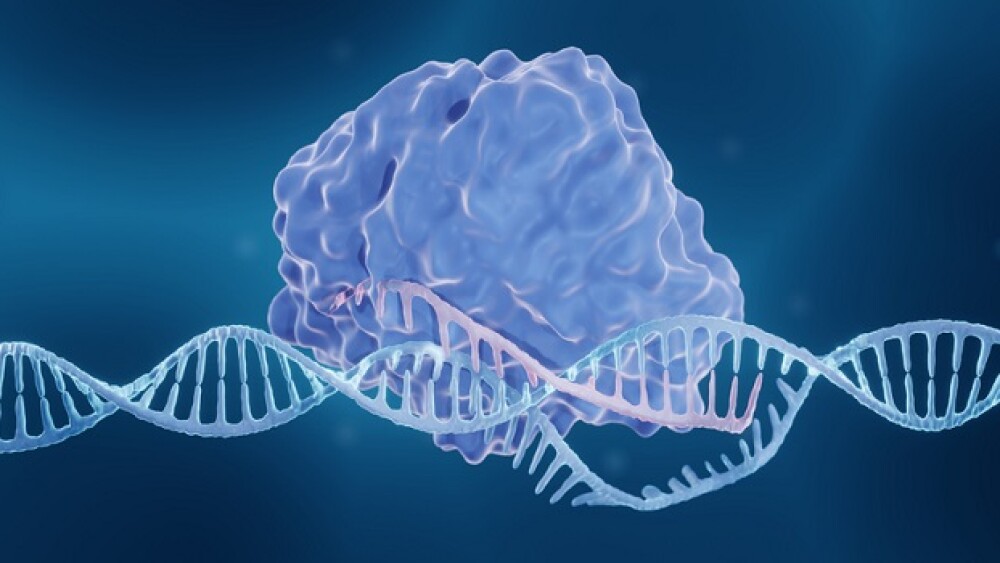In a briefing document for Tuesday’s advisory committee meeting, the FDA raised concerns about the potential off-target effects of Vertex Pharmaceuticals and CRISPR Therapeutics’ investigational gene edited therapy.
Pictured: Illustration of a CRISPR/Cas9 system on a DNA strand/iStock, Artur Plawgo
Ahead of a Tuesday advisory committee meeting, FDA staff have called into question the safety risk testing for Vertex Pharmaceuticals and CRISPR Therapeutics’ investigational sickle cell disease therapy exagamglogene autotemcel (exa-cel).
In their briefing document for the adcomm, the regulator wrote that Vertex and CRISPR used in silico and cellular assays to identify potential off-target effects of the gene editing therapy but was only able to leverage a “limited amount” of reference whole-genome sequencing data.
“Insufficient sequencing data may impede the identification of relevant variants contributing to off-target editing,” the FDA’s staff wrote in the document, adding that the adcomm’s external experts should discuss whether these off-target analyses were “adequate to assess the risk in the intended population … or if additional studies should be performed.”
Vertex and CRISPR’s exa-cel is an autologous and ex vivo therapy that uses the CRISPR/Cas9 system to edit a patient’s own stem cells, allowing them to produce high levels of fetal hemoglobin. This helps the candidate counter the hallmark anemia symptoms in sickle cell disease (SCD), a genetic condition caused by mutations in the beta-globin gene.
Exa-cel is designed to be a one-time, single-dose therapy for patients aged 12 years and older and could provide a “functional cure” for severe SCD, the companies contend in their adcomm briefing document.
Vertex and CRISPR provided data from a pivotal Phase I/II/III trial as well as a long-term safety and efficacy follow-up study to support exa-cel’s regulatory bid. Both studies demonstrated that the cell edited therapy could significantly reduce severe vaso-occlusive events and hospitalizations from these episodes.
Exa-cel also induced an increase in fetal hemoglobin levels, a biomarker “highly predictive” of clinical benefit, according to the companies’ document.
Vertex and CRISPR also presented a strong clinical safety profile for exa-cel, which did not trigger serious adverse events that could be attributed to the experimental therapy. The one death in the clinical development program was ascribed to COVID-19.
The companies called these findings “unprecedented” in the SCD space. “Exa-cel has demonstrated transformative efficacy, a strong safety profile, and a highly positive benefit-risk for treatment of severe SCD patients.”
Vertex and CRISPR have also proposed a post-marketing pharmacovigilance surveillance plan.
The FDA’s Cellular, Tissue, and Gene Therapies Advisory Committee will meet on Tuesday to discuss Vertex and CRISPR’s off-target effects analyses. The regulator is set to release its verdict on exa-cel by Dec. 8.
Joining Vertex and CRISPR in the race to develop a gene editing SCD therapeutic is bluebird bio, whose candidate lovotibeglogene autotemcel will not face the FDA’s advisory committee, unlike exa-cel. Massachusetts-based Editas is also in the running and in June 2023 released data from its RUBY and EdiTHAL trials for its candidate EDIT-301.
Tristan Manalac is an independent science writer based in Metro Manila, Philippines. He can be reached at tristan@tristanmanalac.com or tristan.manalac@biospace.com.






